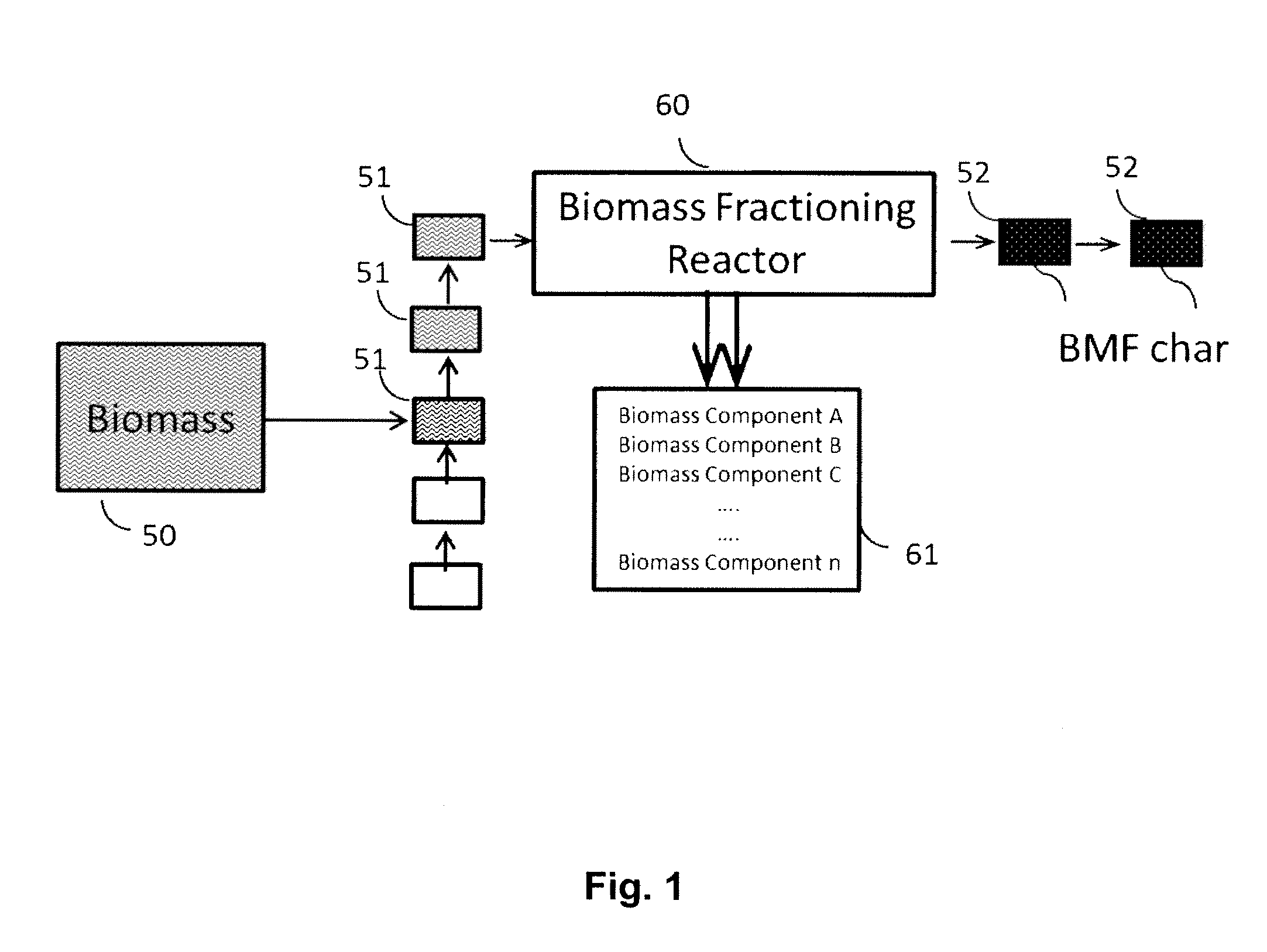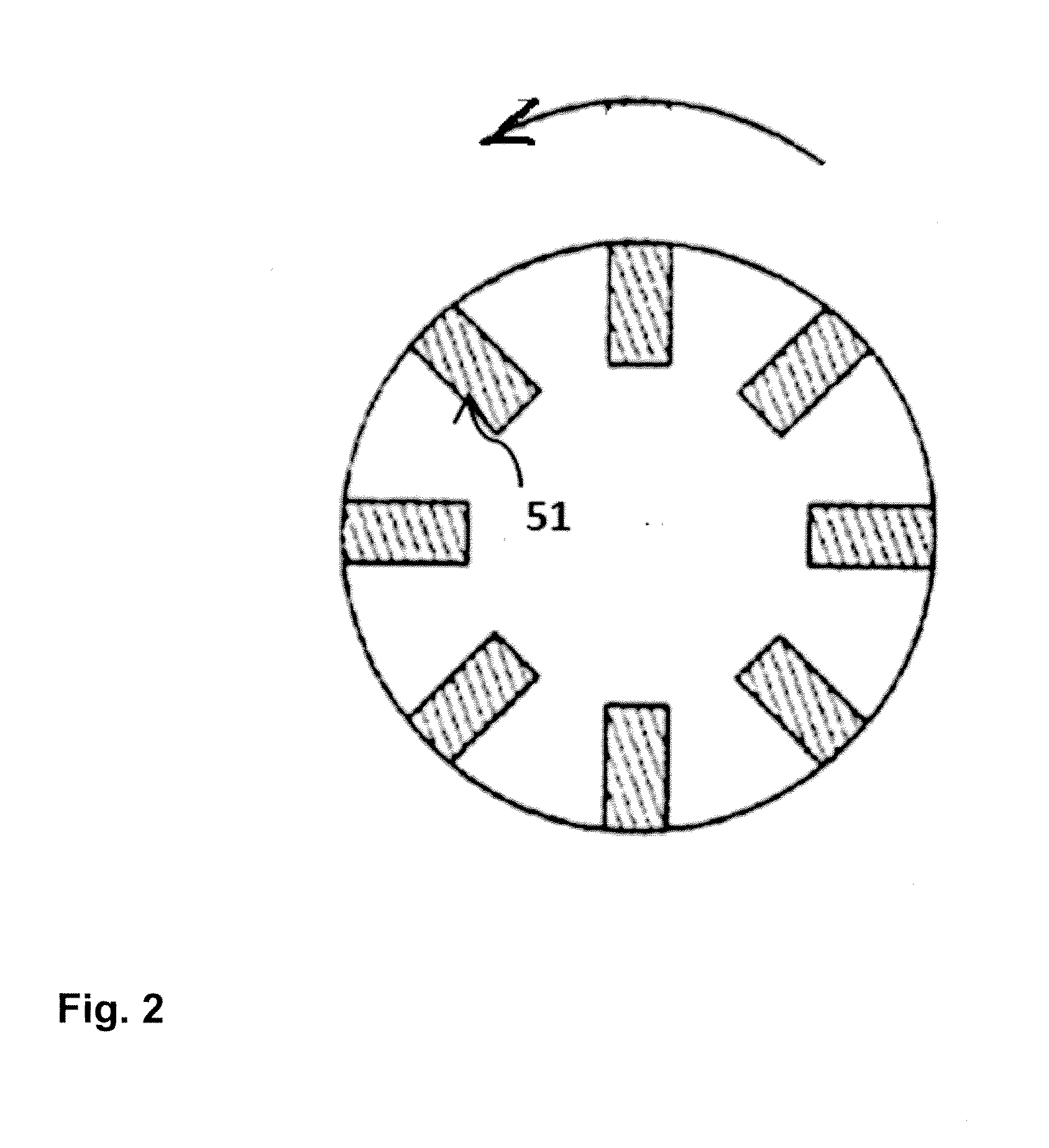Method for biomass fractioning by enhancing biomass thermal conductivity
a biomass and thermal conductivity technology, applied in the field of renewable fuel systems, can solve the problems of hundreds to thousands of resultant compounds, nearly intractable array of resultant compounds all mixed, and decaying and carmelization that we all associate with cooked foods
- Summary
- Abstract
- Description
- Claims
- Application Information
AI Technical Summary
Benefits of technology
Problems solved by technology
Method used
Image
Examples
example 1
[0043]Referring to FIGS. 5a and 5b, an exemplary embodiment of a system and method for biomass fractioning by enhancing biomass thermal conductivity will now be described. In FIG. 5a, a series of anvils 64 are contained in sealed reaction chamber 69 and driven by air cylinders having platen shafts 63. In the illustrated embodiment, there are two sets of anvils 64, wherein every other anvil 64 constitutes a set and moves in unison. The anvils 64 exert pressure shocks on biomass 61, which has been ground and spread out as a thin sheet on pallet 62. The biomass 61 within the latter pallet 62 can be heated to a predetermined temperature via heated anvils 64. The reaction chamber 69 includes an orifice 67 for the exit of generated volatile compounds, and an orifice 68 for the introduction of an inert carrier gas. Anvils 64 are heated alternately when they contact heater bar 66.
[0044]FIG. 5b is a 3-dimensional illustration of the anvil assembly 64 and heater bar 66. The biomass experience...
example 2
[0047]Referring to FIG. 7, another exemplary embodiment of a system and method for biomass fractioning by enhancing biomass thermal conductivity will now be described. In this implementation, each anvil 74 is directly heated via heat conducting electrical feedthroughs 80 attached to each anvil. Anvils 74 are again divided into two sets, each of which moves alternately to compact the biomass. The anvils 74 are heated by feedthroughs 80 to a predetermined temperature, determined by the volatilization temperature of the desired compounds. In the illustrated embodiment, one set of anvils 74 is driven by two pneumatically controlled shafts which move up and down within openings 75a, while another set of anvils 74 is driven by the center shaft (within center opening 75c).
[0048]FIG. 8a is an SEM image of BMF char obtained from corn after treatment using a system and method for biomass fractioning, as disclosed herein. FIG. 8b is a comparative SEM image of the same corn before treatment. It...
PUM
| Property | Measurement | Unit |
|---|---|---|
| Temperature | aaaaa | aaaaa |
| Time | aaaaa | aaaaa |
| Time | aaaaa | aaaaa |
Abstract
Description
Claims
Application Information
 Login to View More
Login to View More - R&D
- Intellectual Property
- Life Sciences
- Materials
- Tech Scout
- Unparalleled Data Quality
- Higher Quality Content
- 60% Fewer Hallucinations
Browse by: Latest US Patents, China's latest patents, Technical Efficacy Thesaurus, Application Domain, Technology Topic, Popular Technical Reports.
© 2025 PatSnap. All rights reserved.Legal|Privacy policy|Modern Slavery Act Transparency Statement|Sitemap|About US| Contact US: help@patsnap.com



